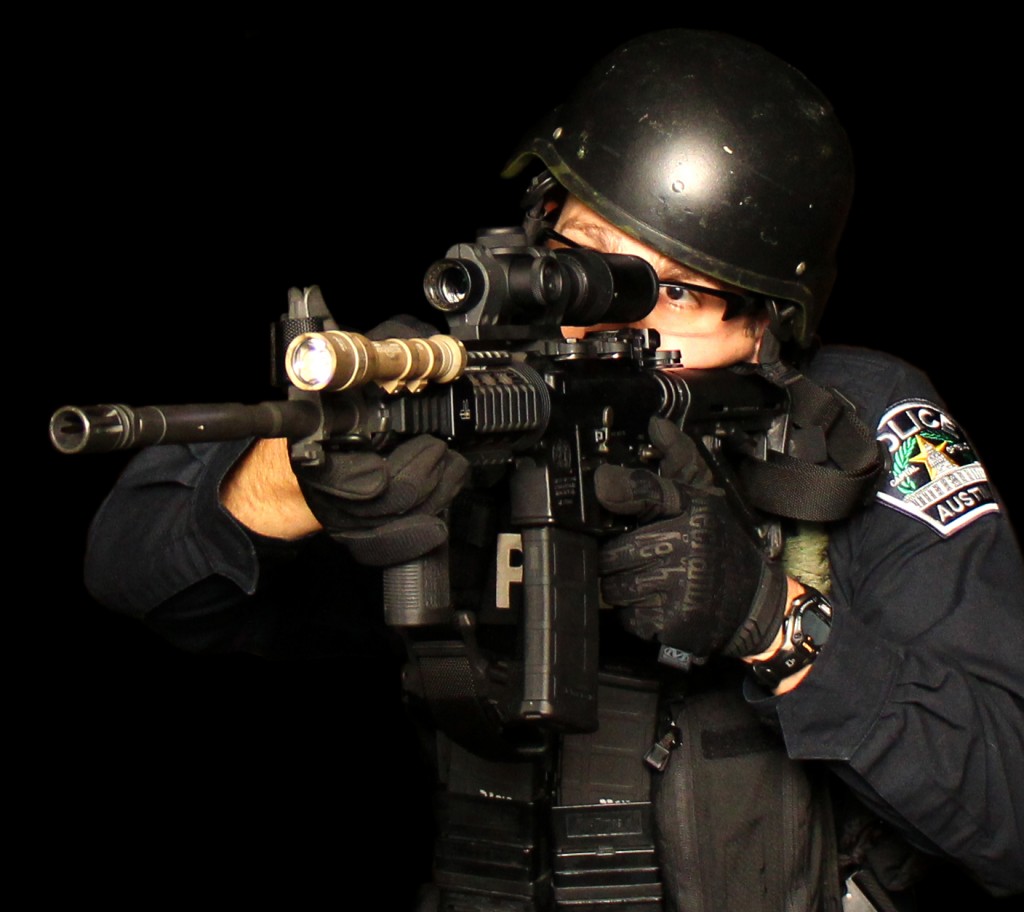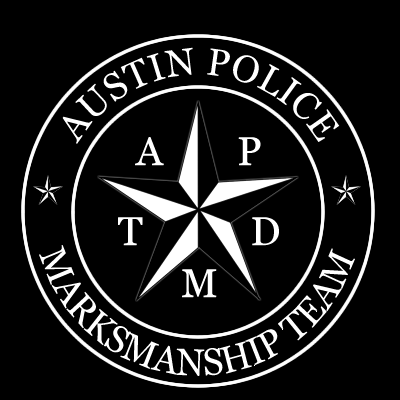
The SR4C takes up a similar amount of space as an RDO and magnifier with a similar weight. Extra weight proved to be the only penalty of the SR4C compared to an RDO alone.
Planning for Mumbai-style terrorist attacks with multiple small active shooter units spread throughout the city, my department has attempted to remain on the leading edge of police response by creating an active shooter response team selected from patrol officers to lead the first responders in active shooter incidents until more specialized on-call units can respond. In addition to their normal patrol duties, the officers on this active shooter response team are issued and trained on extra equipment, and they receive initial and routine sustainment training on team tactics and combat marksmanship. Having used my issued M&P15 and Aimpoint for this training for several years, I replaced the Aimpoint with the SR4C for the most recent two-day training evolution. Donning a plate carrier and ballistic helmet, the SR4C’s performance mirrored the previous short range performance during live fire movement to contact drills on the 50 yard range. Due to the unknown distances that I would be engaging targets, the SR4C remained on 1x and looked and performed identical to my Aimpoint. Even with the plate carrier and ballistic helmet, eye box and scope shadow were not an issue. Getting off the square range, we moved into the two-story simunitions house to practice dry runs of interior team movement. Again, the SR4C was very RDO-like with one minor difference: at very close small room distances, some scope shadow could be seen while bringing the rifle up before it was fully shouldered. On a fully exposed target at very close range, the dot can begin to cover the lower torso of the target allowing effective fire to begin before the rifle is completely shouldered. An RDO gives the shooter a complete sight picture at this moment before the rifle is completely up, but the SR4C had some slight scope shadow at the very top of the ocular window that obscured the target. However, the SR4C’s red dot was still visible even superimposed over the black scope shadow, so these shots could still have been made while referencing the rest of the ocular window, target visible above the optic, and full target view of the non-dominant eye. Beyond 10 feet the scope shadow disappeared completely, and this issue did not manifest itself in the live fire shoothouse on hostage targets at the same distances.

SR4C utilized in complete active shooter response kit. The SR4C exhibited true RDO performance at close range with the benefit of improved target observation at longer range during force-on-force scenarios.
The second day of training consisted entirely of force-on-force active shooter scenarios utilizing simunitions in a two-story office and warehouse space loaned to us by a local business. Scenarios lasted 30 minutes to one hour and featured suspects wielding blank and simunition guns, injured victims, multiple team responses, vehicle deployments, and IEDs. The scenarios usually began as a response to a suspicious person and finally ended once the building was clear and victims were treated and evacuated. The weather outside was cold and lightly raining, and the lighting conditions inside varied from total darkness to fluorescently lit rooms. I set the SR4C’s illuminated red dot at the beginning of the day and did not have to adjust it when moving from outdoors to indoor both with and without weaponlight use. The exterior approach to the building started from 100 yards to a quarter mile, and interior distances ranged from small 10 foot offices to 25 yard warehouse spaces. Every scenario was in full kit including plate carrier with spare rifle magazines and medical gear, ballistic helmet, rifle with simunitions bolt, and duty belt with simunitions pistol, handcuffs, and radio. Out of the nine scenarios runs that day, I used the SR4C to put rounds on suspects in most of them. At all of the interior engagement ranges, I used the SR4C on 1x, and it performed exactly as my Aimpoint out to the furthest interior target at about 20 yards. The scope shadow observed the previous day was never encountered, and I had no trouble hitting targets that were moving and shooting while I was also moving and shooting in a team environment. Officers are trained to engage the target until it is down and no longer a threat, and I was able to track the SR4C’s red dot during recoil and follow the suspect down while shooting. While I was excited to find that the SR4C performed exactly as my Aimpoint, by the end of the day I was wondering why I would want to carry the extra weight on my rifle when I had only used the SR4C on 1x. That changed during the final scenario. Dispatch put out a suspicious person call of multiple subjects unloading weapons from a vehicle parked in front of an office building. After a quarter mile run down the street, the building came within view about 100 yards away after passing a tree line. Three subjects could be seen unloading objects from the passenger compartment of a car parked in front of the building, but the 100 yard distance precluded me from seeing exactly what they were doing. I rotated the magnification ring up to 4x and could make out one of the subjects pulling an SKS out of the back seat. I was already on target by the time he turned to fire saving precious seconds having already identified threat. The two other subjects ran inside the building while we engaged the SKS wielding threat who had immediately moved behind the vehicle to use it as cover leaving only his head and shoulders visible once he began firing. The extra magnification made the 100 yard head shots on the mostly obscured target much more confident, and I could see every movement the suspect made through the scope. Once he was down, we advanced on the subject to secure him, and I was able to rotate the magnification ring back down to 1x during movement. The SR4C was later used on 1x inside the building to put down additional threats. The SR4C’s magnification during the final scenario demonstrated the optic’s superior target identification, observation, and obscured target engagement at medium range distances.
The US Optics SR4C proved to be a versatile optic offering the speed of an RDO and precision of a scope. The only penalties for these abilities are the optic weight and cost. The SR4C is not cheap at $1999 MSRP, but US Optics does offer a 20% law enforcement discount. If magnification would be helpful on your beat, the USO SR4C is certainly capable at any distance an officer and his patrol rifle may encounter.


Comments
Excellent review, very thorough and detailed with relevant scenarios throughout and a wide range of applications. Comparisons to ACOG and Aimpoint much appreciated. Thanks.